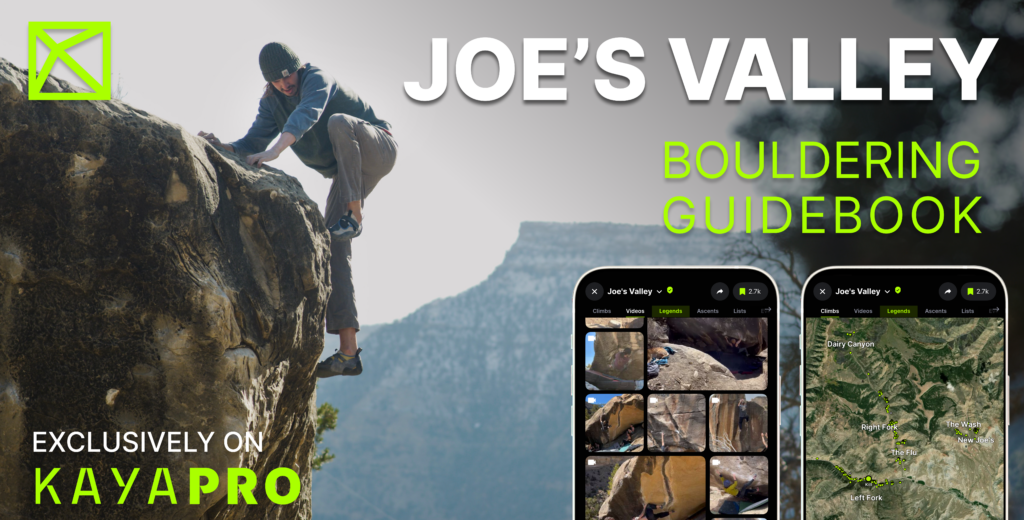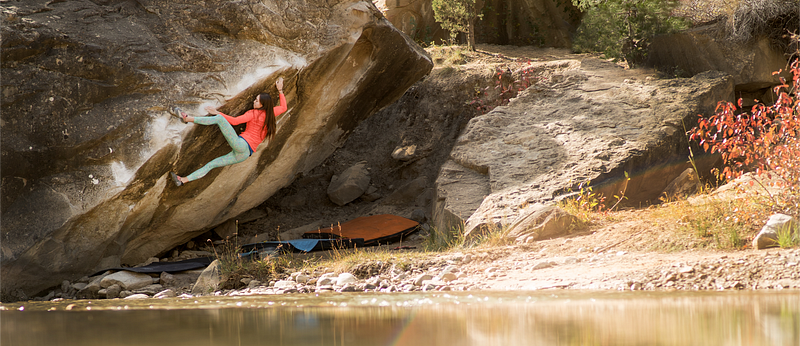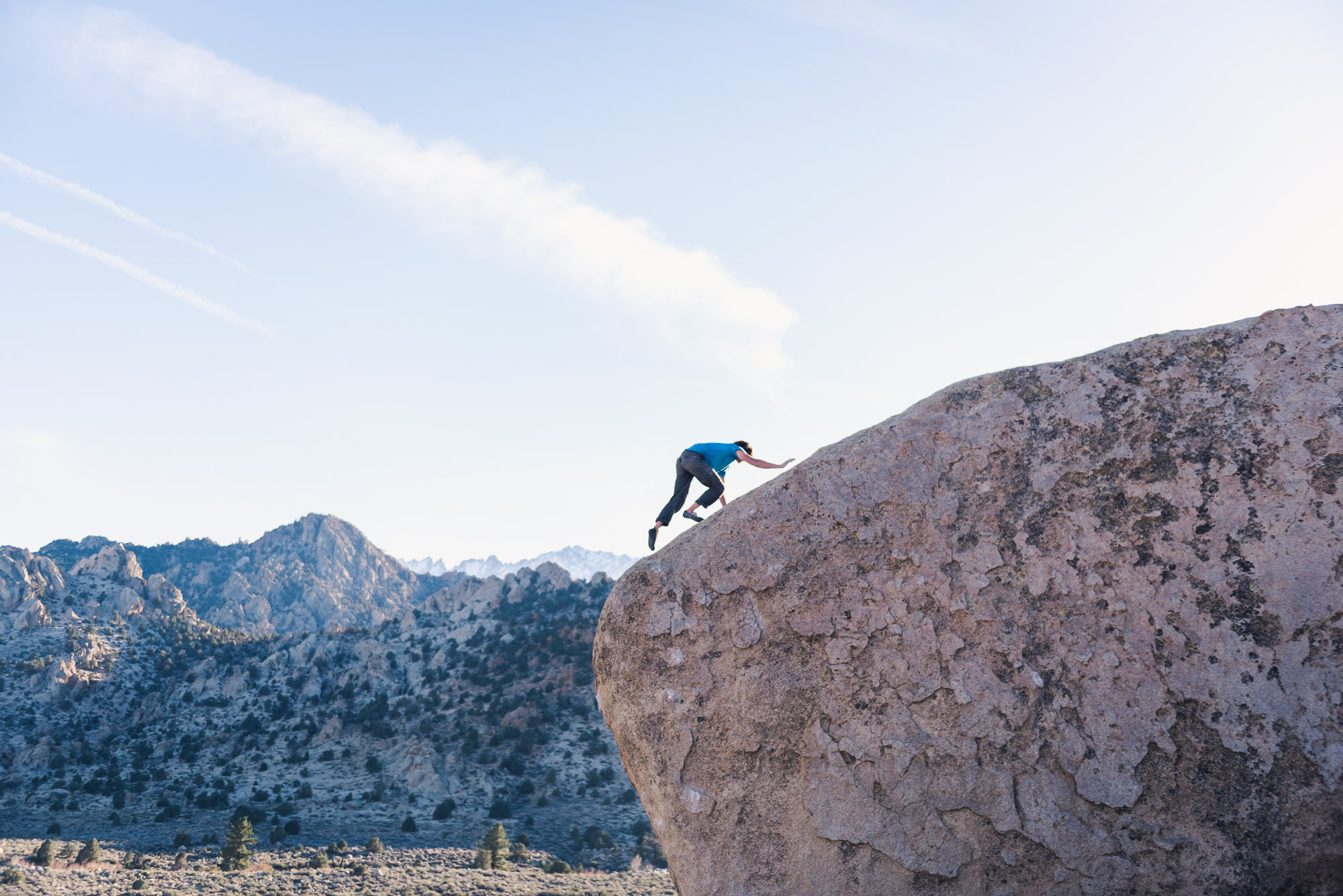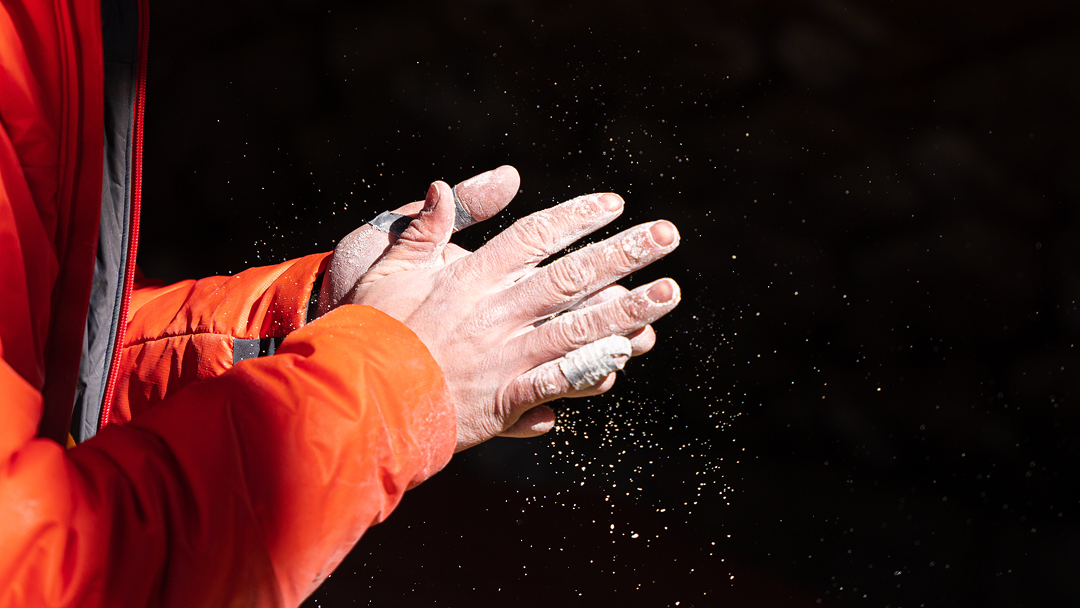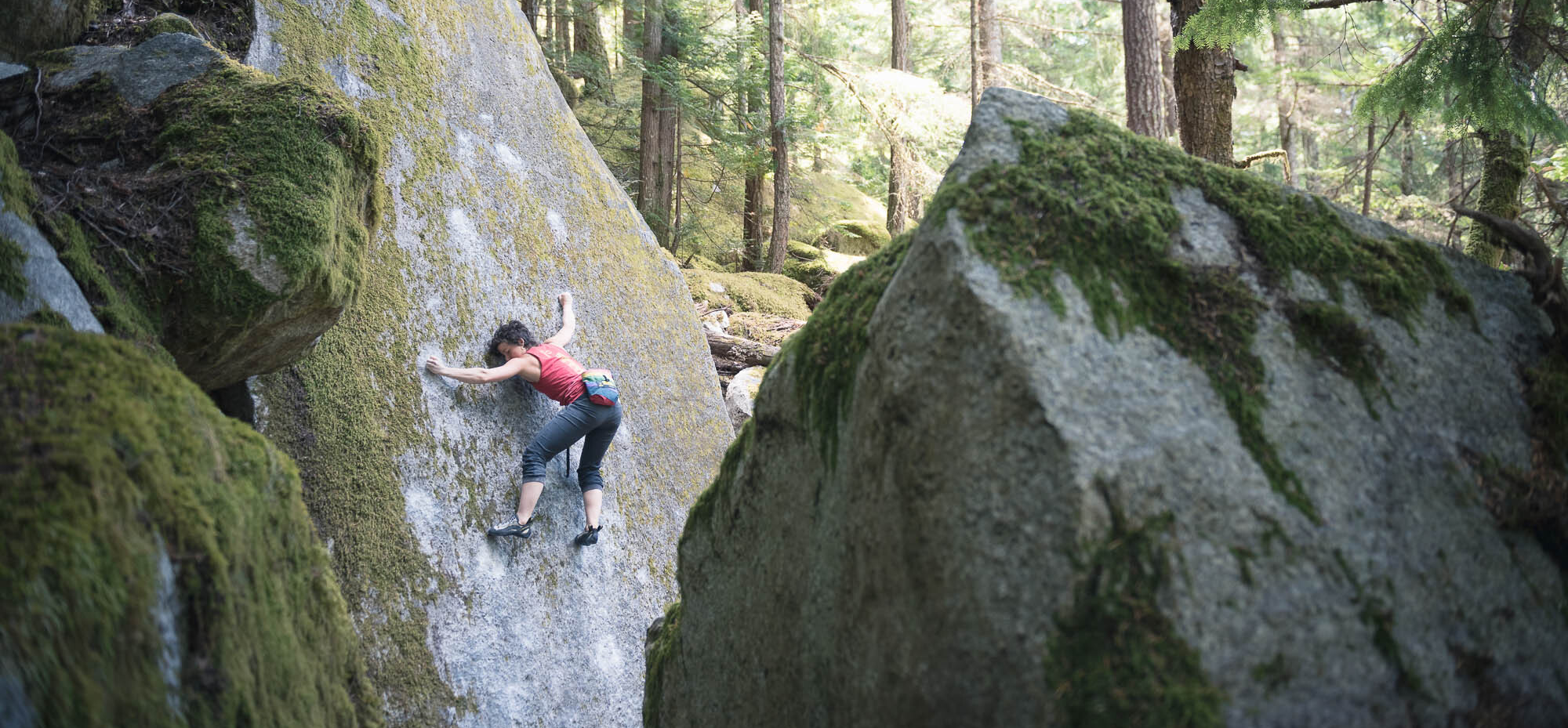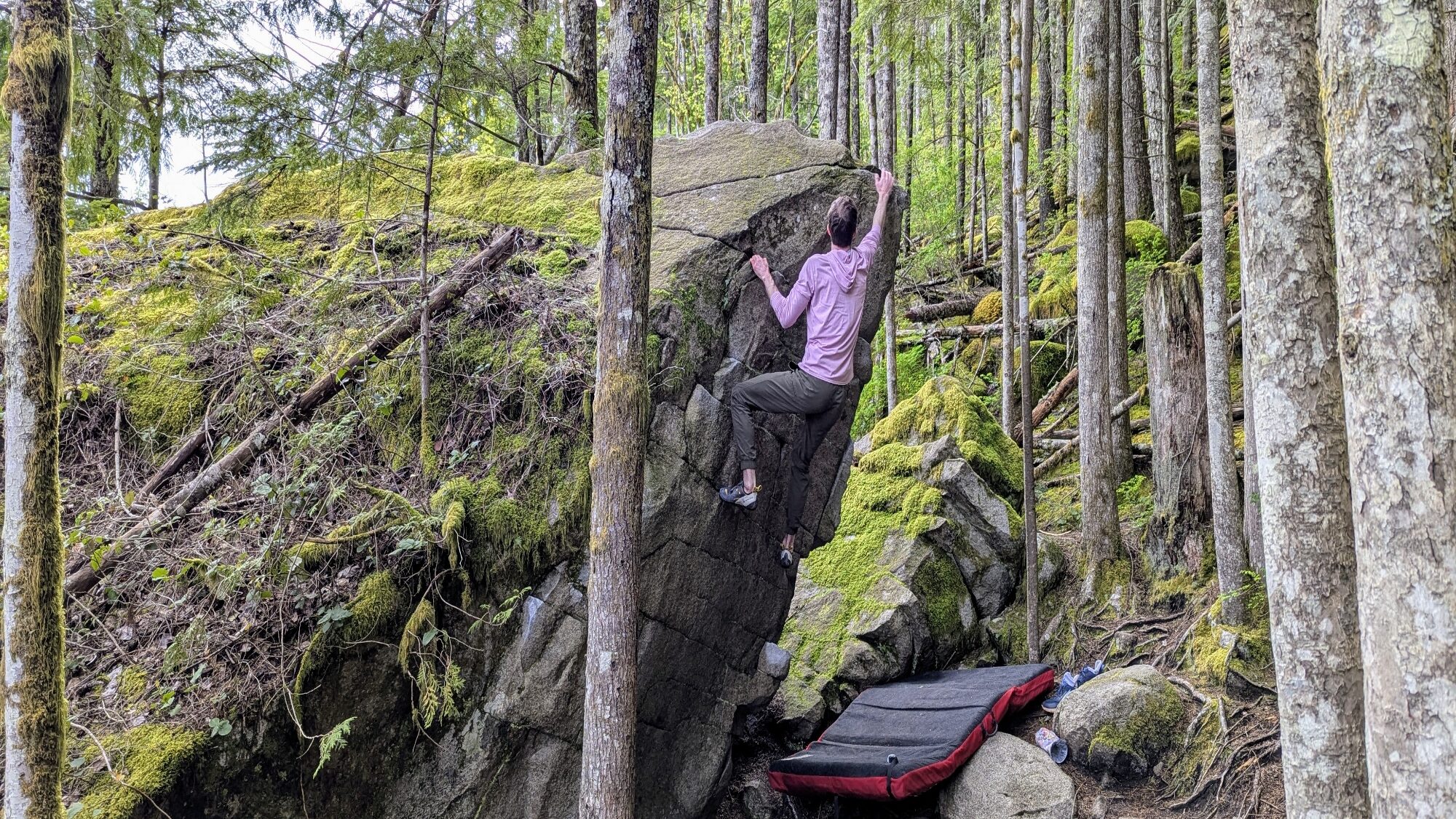Joe’s Valley Bouldering Overview
Just a three-hour drive from Salt Lake City, Joe’s Valley is a must-visit for any boulderer in the West. Tucked into the high desert outside the small towns of Orangeville and Castle Dale, Utah, the sandstone bouldering in Joe’s is world-class. With thousands of problems across all grades, stunning scenery, and many roadside boulders, Joe’s has unmatched convenience and quality.
Whether you’re escaping the Wasatch for a long weekend or planning a climbing trip, Joe’s delivers. Spring and fall are the best climbing seasons, but don’t count out winter—dry, crisp days can offer surprisingly good conditions. This guide covers everything you need to know to make the most of your trip: must-visit zones, classic problems, beta for navigating the area, and tips for being a good steward of the land.
Also, check out The Top 10 Most Popular Problems in Joe’s Valley!
Understanding Joe’s Valley Bouldering
History of Joe’s Valley Bouldering
Climbers first began developing Joe’s Valley in the mid-1990s, when word of the unique sandstone boulders started to spread beyond Utah. Early developers like Boone Speed and Jason Kehl were among the first to recognize the potential here, putting up iconic lines that still see traffic today. As guidebooks and video footage made their rounds, Joe’s quickly gained momentum in the broader climbing world.
By the 2000s, Joe’s had cemented its status as one of North America’s premier bouldering destinations, attracting climbers from around the globe. Annual events like the Joe’s Valley Bouldering Festival now bring the community together for stewardship, education, and celebration.
Rock Type and Climbing Style
Joe’s Valley is famous for its fine-grained sandstone, known for being both grippy and skin-friendly (until it’s not). The texture varies across the different zones—from smoother patina-covered faces to rougher, more abrasive stone in high-traffic areas—giving the climbing plenty of variety.
Climbing at Joe’s tends to be powerful and gymnastic, with an emphasis on overhangs, compression, and big moves. You’ll find everything from slopey topouts and thuggy roof problems to delicate techy face climbs. Many problems feature positive holds and safe landings, making them approachable even at higher grades.
Best Times to Boulder in Joe’s Valley
Joe’s Valley offers three-season bouldering, with some potential for winter sends during dry spells. Thanks to its high desert climate and lots of south-facing boulders, dry conditions can be found in the winter, but fall and spring are the sweet spot.
Peak Climbing Seasons
Fall (September–November):
The prime season. Crisp temps, stable weather, and stunning fall colors make this the best time to climb. Weekends can get busy, especially around the Joe’s Valley Bouldering Fest in early October.
Spring (March–May):
Excellent climbing conditions, especially in later spring. Snowmelt may affect shady boulders or camping early in the season, but most areas dry quickly and become accessible by April.
Summer (June–August):
Not ideal—temps often hit the 90s, and direct sun bakes the boulders. Early mornings and shady zones can still offer short sessions, but this is generally the off-season.
Winter (December–February):
Cold, dry days can offer prime friction and solitude, but snow and ice limit access to some zones. New Joe’s boulders are often the warmest and stay drier than shady areas.
Essential Areas for Every Skill Level
Beginner-friendly Classics
Joe’s Valley is ideal for newer climbers thanks to its abundance of approachable, high-quality problems on solid rock. The landings are often flat, the approaches are short, and many problems feature positive holds and intuitive movement. Whether you’re new to outdoor bouldering or just looking for a mellow day, these areas and problems are a great place to start:
Kill by Numbers V5 features a high heel hook and fun gymnastic climbing. It’s a Joe’s Valley must-do for all levels.
The Angler V2 is your Joe’s Valley photo keepsake shot. It’s a delightful rail climb that gets right to the edge of the comfort zone. Or you can always just mantel up early and do the Walk of Shame (V0).
Check out Pimpin’ jeans V3 for classic Joe’s crimping and a long move to a tricky mantel.
No matter what area you choose, rest assured that there will be plenty of beginner-friendly problems to test yourself on. Climbing a large volume of climbs in this grade range is the fastest and best way to quickly improve your technique on this rock type!
Intermediate Classics
For unique knee bars, heel-hooks, and compression climbing, Planet of the Apes V7 in New Joe’s is a classic.
Wills A Fire V6 is one of the most popular boulders in Utah, and for good reason. It’s a perfect entry-level highball for those wanting to check out some of the taller boulders Joe’s has to offer.
Great White V6 is an aptly named shark-shaped boulder in Right Fork. Start on the low undercling and climb up the mouth. Reach over the lip and hug it to the nose and mantel.
Bring the Heatwole V7 is a funky, unique climb that features various techniques and hold types and fits most boxes.
Hard Classics
Joe’s Valley is stacked with legendary test pieces that have defined sandstone bouldering in the U.S. From steep power problems to tall, technical slabs, Joe’s offers a deep collection of hard climbs that reward strength, precision, and mental grit.
Scrawny and Brawny V8 – short and steep with several different betas. The newer foot-first heel/toe or the OG jump.
Finger Hut V10, – The first of the grade in Joe’s. It offers classic Joe’s crimping and powerful board-style climbing.
Worst Case Scenario V9 – Beautiful movement with fall potential for disaster. Make your way up a sandstone tufa and out to small edges and safer landing zones. Bring your spotters and watch out for cars!
Beyond Life V10 – A proud line favoring taller climbers with fantastic compression climbing.
Extra Hard Boulders
If you’re looking to try out some of Joe’s hardest, give these a try:
Slasher V13 offers one-of-a-kind holds and a potentially heartbreaking jump finish.
Pagan Poetry V11 features incut crimps on a steep overhang. Bring your core tension!
Masterpiece V13 is a tall, proud boulder with wild moves leading into one of the best V9’s in Joe’s, Renaissance Man.
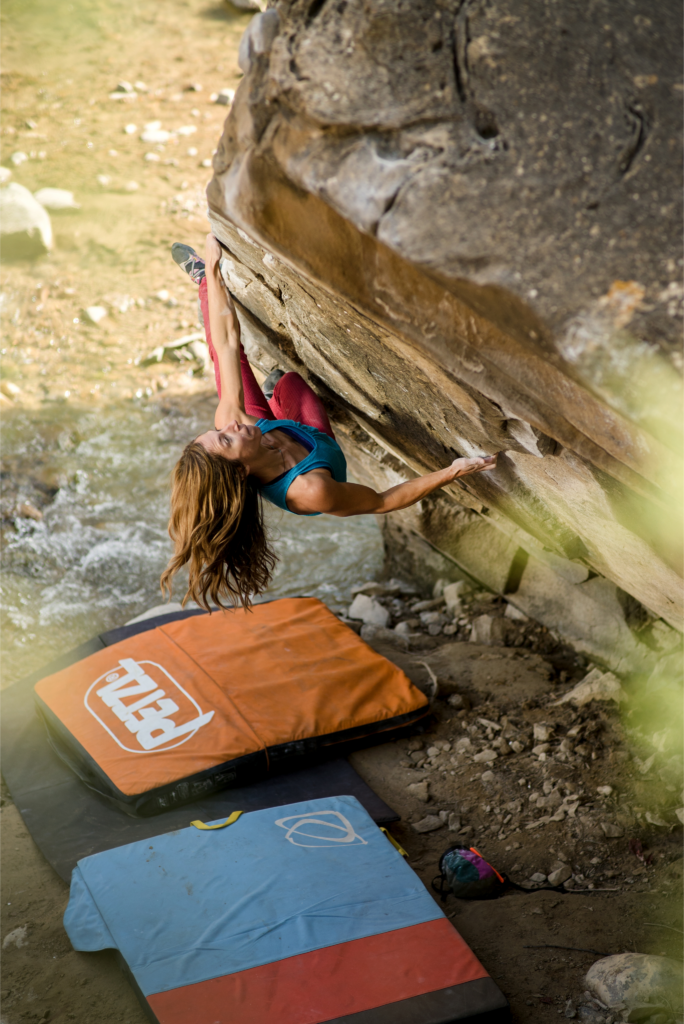
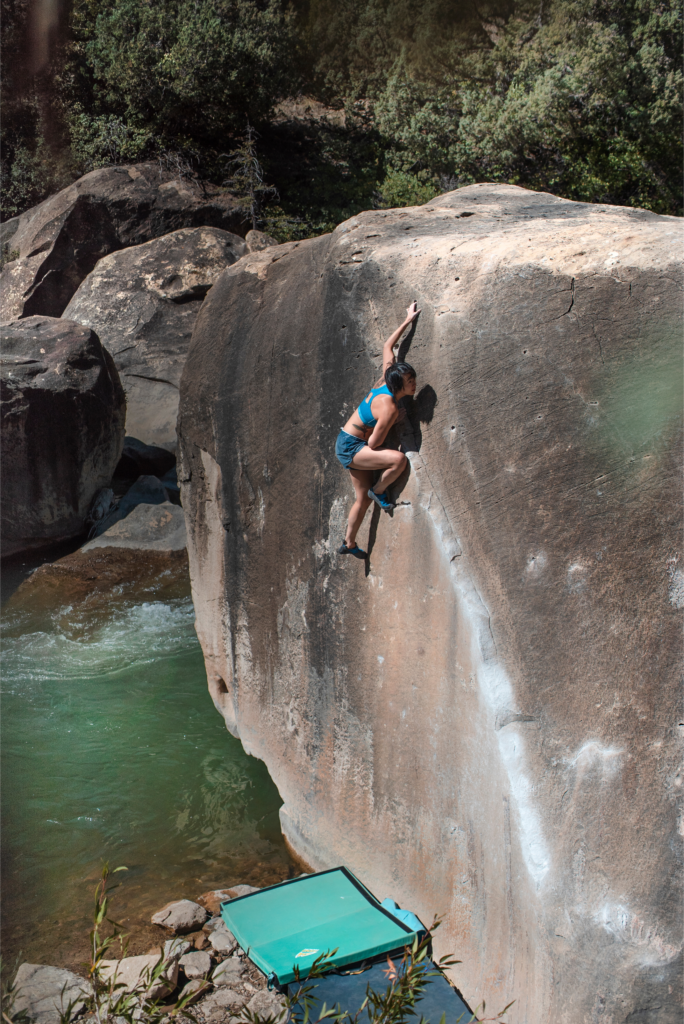
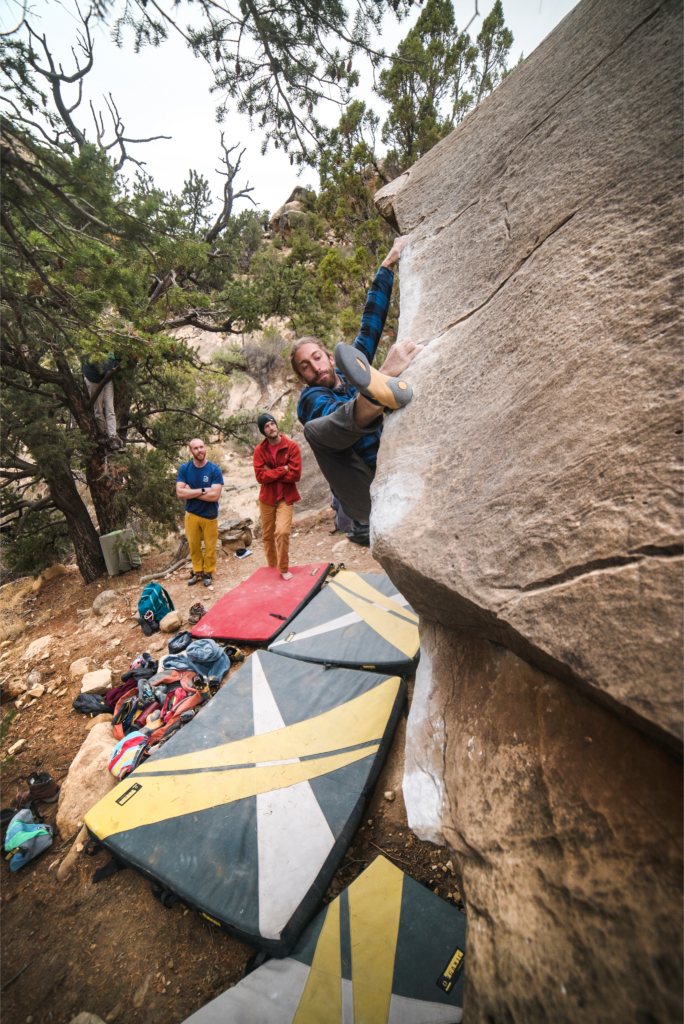
Planning Your First Joe’s Valley Bouldering Visit
Joe’s Valley is a sandstone paradise with enough boulders to suit any boulderer. Split between Left Fork, Right Fork, and New Joe’s, it offers everything from powerful roof climbs to delicate face problems. Because the zones are spread out and the approach beta can be tricky, it’s smart to plan ahead and build your tick list with intention. Use the downloadable maps on KAYA and make lists to group climbs by proximity and minimize drive time during your trip.
Required gear
A solid pair of climbing shoes is key—something with a good toe and heel for hooking, and rubber that performs well on textured sandstone. You’ll also want multiple crash pads, especially for the taller problems and uneven landings Joe’s is known for. Don’t forget a chalk bucket, tape for split tips, and layers—temps can vary widely between sun and shade.
Skin Preparation
The sandstone at Joe’s is known for being skin-friendly at first, but it can be deceiving. Volume sessions and sharp patina can eat through tips fast. Rest days, skin salve, and climbing in the shade during warmer months will help you preserve skin. Joe’s is a great place to climb multiple days in a row, but it pays to listen to your body (and fingers).
Navigation tips
Joe’s is a quick 3-hour drive from Salt Lake City and sits between the small towns of Orangeville and Castle Dale, Utah. There’s limited cell service in the canyons, so download offline maps and save your tick list on KAYA ahead of time. The main road (Highway 29) gives you access to both Left and Right Fork, while New Joe’s is reached via a short drive south of Orangeville. Many of the climbing areas are just minutes from your car—one of the many perks of Joe’s.
Safety and Ethics Essentials
- Never climb on wet rock. Wet sandstone is fragile and easily broken, so climbers must wait at least 24-48 hours after rain to climb.
- When parking along the road, be certain to be sufficiently off the road. If there isn’t enough space to park safely, try a different area.
- Stay on established trails and keep crash pads off of vegetation.
- Pack it in, pack it out. Joe’s is a popular area, and climbers have a huge impact on the environment. Use a toilet or wag bags.
- Be respectful of other climbers and brush your tick marks!
- Absolutely no painting, carving, chipping, or using wire brushes, etc.
Joe’s Valley Bouldering Conclusion
Joe’s Valley delivers an unbeatable combo of accessible stone, diverse climbing styles, and desert beauty.
Check out the complete Joe’s Valley guide by Steven Jeffery and the Joe’s Valley Coalition on KAYA.
